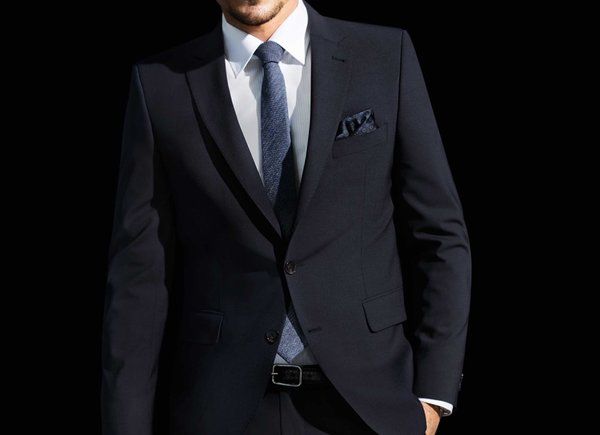Decoding Elegance: The Timeless Charm of Tuxedo Suits
Interpreting Elegance: The Everlasting Allure of Tuxedo Suits
Few clothes in the world of formal wear exude sophistication and refinement like a tuxedo suit. The tuxedo is the preferred option for important occasions and black-tie affairs because of its elegant design, satin lapels, and clean white shirt, which give it an impression of timeless elegance. With the help of this in-depth guide, let’s dispel the mystery surrounding tuxedo suits by learning about their features, history, and styling advice.
A Brief History: From Dinner Jackets to Tuxedos
The origins of the tuxedo can be traced back to the 19th century, when formal evening attire underwent a transformation in response to changing social norms and fashion trends. In 1860s England, a style of informal evening jacket known as the “dinner jacket” gained popularity among the elite for gatherings at country estates and private clubs.
Meanwhile, across the Atlantic, a similar style of jacket emerged in the United States, thanks to a wealthy New Yorker named James Potter. Potter, impressed by the English dinner jacket he had encountered during a trip to England, commissioned his tailor to create a similar garment for his social events in Tuxedo Park, New York. Thus, the “Tuxedo jacket” was born, named after the affluent enclave where it first gained prominence.
Over time, the Tuxedo jacket evolved into the iconic ensemble we know today, characterized by its satin lapels, matching trousers, and accessories such as a bow tie and cummerbund. Renowned for its sophistication and versatility, the tuxedo became the preferred choice for formal occasions, from weddings and galas to red-carpet events and awards ceremonies.
Key Features: Anatomy of a Tuxedo Suit
While the basic elements of a tuxedo suit remain consistent, there are variations in style and detailing that allow for personalization and expression. Here are the key features that define a classic tuxedo:
Jacket: The tuxedo jacket typically features satin or grosgrain lapels, which contrast elegantly with the main fabric of the jacket. Common styles include peak lapels, shawl lapels, and notch lapels, each offering a distinct aesthetic.
Shirt: A crisp white dress shirt with a wingtip or spread collar is essential for completing the tuxedo ensemble. French cuffs, which require cufflinks for closure, add a touch of sophistication.
Trousers: Tuxedo trousers are traditionally made from the same fabric as the jacket, with a satin or grosgrain stripe running along the outer seam. They are typically tailored with a flat front and no cuffs for a streamlined look.
Accessories: Accessories play a crucial role in enhancing the elegance of the tuxedo. A black bow tie, preferably in silk or satin, is the quintessential neckwear choice, while a cummerbund or waistcoat adds a polished finishing touch.
Footwear: Patent leather or highly polished black dress shoes complement the formal aesthetic of the tuxedo. Loafers or oxfords with a subtle sheen are ideal choices for completing the ensemble.
Styling Tips: Mastering the Art of Black Tie
While the classic black tuxedo remains a timeless choice for formal events, there are variations and styling techniques that allow for individuality and creativity. Here are some tips for mastering the art of black tie dressing:
Choose the Right Fit: Fit is paramount when it comes to tuxedo suiting. Opt for a well-tailored silhouette that skims the body without being too tight or too loose.
Experiment with Fabrics: While black wool is the traditional choice for tuxedo suiting, don’t be afraid to explore different fabrics and textures for a modern twist. Velvet, silk, and even jacquard fabrics can add visual interest and depth to your ensemble.
Play with Accessories: Accessories offer an opportunity to inject personality into your tuxedo look. Experiment with different bow tie styles, pocket squares, and cufflinks to showcase your individuality.
Consider the Occasion: While the classic black tuxedo is suitable for most formal events, consider the dress code and theme of the occasion when selecting your attire. A white dinner jacket or a colored tuxedo can be appropriate for certain settings, adding a touch of flair to your ensemble.
Confidence is Key: Ultimately, the most important accessory you can wear with your tuxedo is confidence. Stand tall, own your look, and exude poise and elegance with every step.
Adopting Timeless Elegance
The charm of the tuxedo survives as a sign of eternal elegance and sophistication in a world where fashion trends come and go. The tuxedo continues to be a fashion staple that cuts across age and cultural divides, whether worn as part of a traditional black ensemble or in more avant-garde ways.
People may embrace the art of black tie wearing with confidence and grace and make a lasting impression at every formal occasion by learning about the tuxedo suit’s history, characteristics, and style advice. So, the next time you get a black-tie event invitation, embrace your inner James Bond and dress to impress in a well-fitting tuxedo suit. You’ll be sure to turn heads and win hearts wherever you go.

